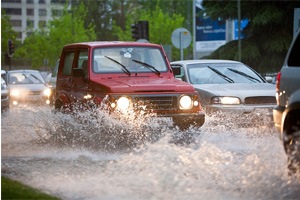
Please choose a body region on the right for you to pin point the problem area of your body.

Shop by Condition

Shop by Brand
by Dr. Jeremy Shapiro
 Watching the video and pictures of natural disasters that occurred in the past two years serves as a reminder of how fragile life can be and that sometimes things are truly out of our own hands. We can prepare, but can we be fully prepared for an earthquake of a 9.0 magnitude?
Watching the video and pictures of natural disasters that occurred in the past two years serves as a reminder of how fragile life can be and that sometimes things are truly out of our own hands. We can prepare, but can we be fully prepared for an earthquake of a 9.0 magnitude?
I can tell you this, in Southern California where we expect the “big one” at any time, the magnitude of an earthquake like the one in Japan in March 2011, would be absolutely catastrophic.
But what exactly can we do while we wait for the “big one” or another natural disaster? Well, with thanks to the Family Readiness Kit: Preparing to Handle Disasters, 2nd Edition, via HealthyChildren.org, I’d like to share some very important items that should be found on your family disaster supply list. Feel free to add anything you may feel has been left off the list.
Non-Food Items:
--------
Dr. Jeremy Shapiro currently practices as a general pediatrician in a large and extremely busy pediatric practice in Encino, California caring for newborns, college students, and all ages in between. He has been on active staff at a variety of hospitals/medical centers throughout the Los Angeles area which has given him the opportunity to not only teach medical residents but give seminars to soon-to-be parents.
Get $10 off your next order when you sign up to receive our email newsletter.*
Simply enter your email address below!
*Minimum order value of $100. Valid email address to qualify.






